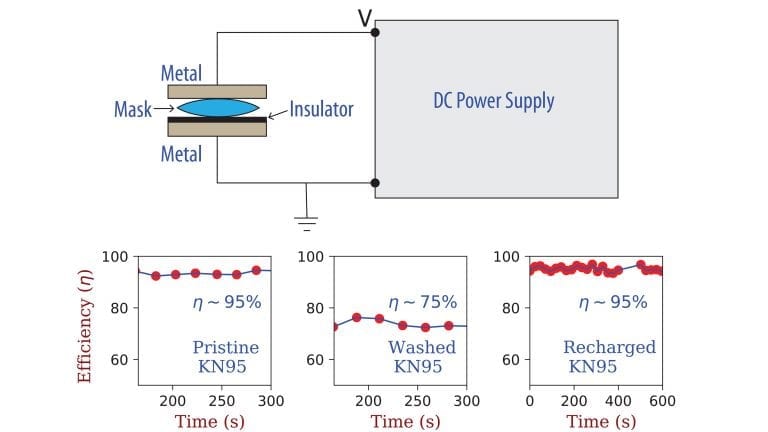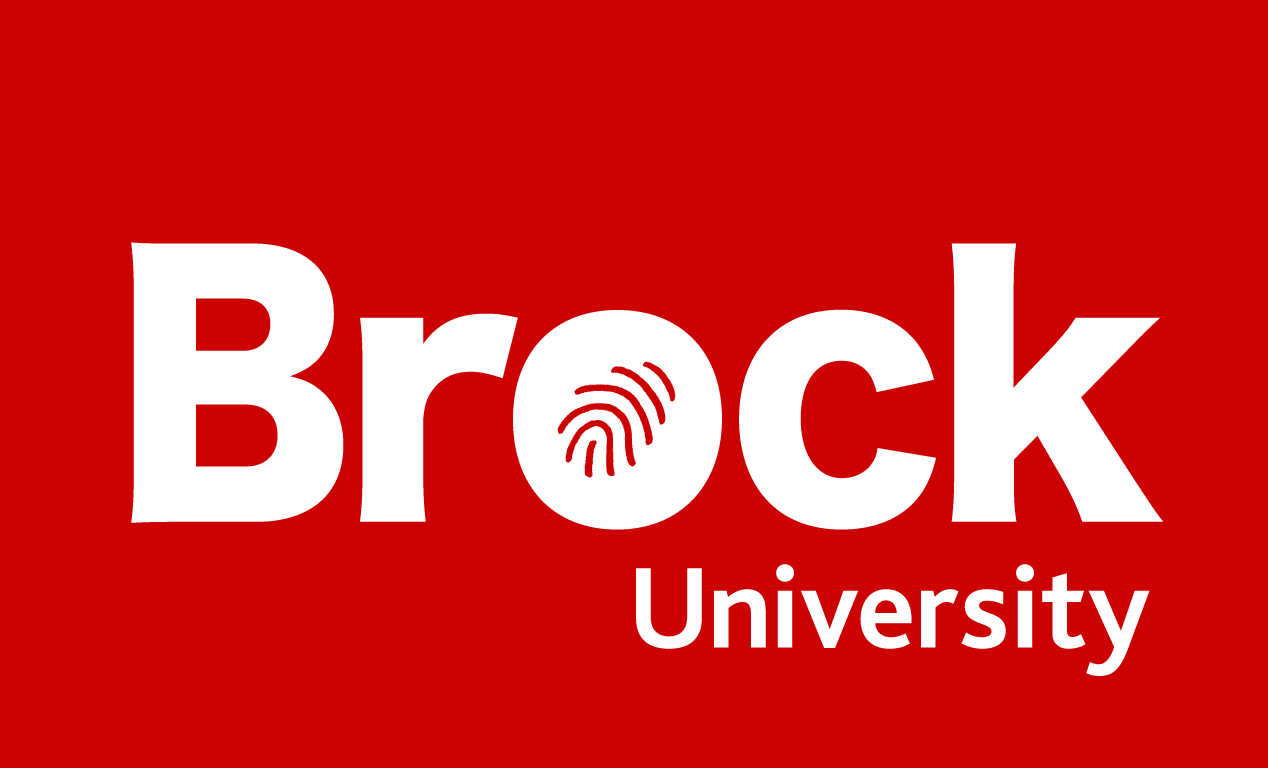
Schematic of the method to recharge decontaminated masks, and a comparison of their pristine, decontaminated and recharged filtration efficiencies. Credit: TIFR
N95 masks are a critical part of the personal protective equipment used by front-line health care workers. These masks achieve 95% efficiency at filtering out tiny 0.3-micron particles, while maintaining reasonable breathability, thanks to a layer of fine melt-blown polypropylene fibers incorporating electrical charges to attract particles
Extended usage and decontamination provoked by severe supply shortages around the globe during the COVID-19 pandemic can easily remove the charges and degrade filtration efficiency.
In the journal Physics of Fluids, from AIP Publishing, researchers from India’s Tata Institute of Fundamental Research and Israel’s Technion-IIT share a method to restore the filtration efficiency of N95 masks to out-of-box levels — as long as the mask is not structurally compromised.
“Today, N95 masks are being worn by health care workers for extended periods,” said co-author Shankar Ghosh. “This gives rise to very humid conditions, and humidity is detrimental to electrostatics.”
During use, all electrostatics-based masks slowly lose their efficiency due to humidity.
“It’s much worse in a place like Mumbai during the Indian monsoon, where ambient humidity levels can reach more than 90%,” Ghosh said.
The group’s work exploits that, under high electric fields, the polypropylene conductivity is high, which makes introducing excess charges into the material possible by connecting it to a battery. When the charge source is switched off, the applied electrical field becomes zero, and the conductivity of the polypropylene drops effectively to zero. As a result, the added charge carriers immobilize, and the material remains charged.
The researchers discovered they could toss an N95 into a standard washing machine to clean it, which significantly reduces its filtration efficiency. They could then recharge it by sandwiching it between two electrodes at high voltage to recover its 95% efficiency.
“We’ve also shown a proof-of-concept construction of a battery-operated smart mask, where the lost charge gets replenished periodically by plugging the mask into a charging station — akin to how you would charge your smartphone,” Ghosh said.
The group believes its method to keep masks charged will lead to highly energy-efficient smart masks.
“Currents are in microamps, and the power requirement is extremely low, on the order of a milliwatt, so a compact and practical solution may soon be feasible,” said Ghosh.
Beyond this, their method will be useful for a variety of air filtration applications, such as HVAC or industrial filters.
The Latest Updates from Bing News & Google News
Go deeper with Bing News on:
N95 masks
- California company punished with huge payment after overhyping goofy COVID-19 masks
Stay safe with its replaceable N95 Grade filters for daily protection.” Also on the page, Razer wrote that the mask came with “N95 grade filters with two-way protection” and that it was ...
- The US just took every penny Razer made from selling a bogus 'N95' mask
According to Engadget, while Razer first advertised the Zephyr mask as N95-grade and also launched a Pro version of it in 2022, the company later removed the N95-grade claims from its product page and ...
- FTC fines Razer for every cent made selling bogus “N95 grade” RGB masks
The Federal Trade Commission (FTC) announced this week a proposed settlement [ PDF] against Razer that would see the tech company pay $1,171,254.33 for its misleading claims about the Zephyr RGB face ...
- Surprise! That futuristic COVID mask was even sketchier than we thought
The Federal Trade Commission has ordered Razer to issue over $1.1 million in full refunds for its Razer Zephyr facemasks after alleging the PC gaming accessory company falsely billed its futuristic ...
- Razer to pay out over $1 million in refunds over its misleading (and hideous) Zephyr face mask
Razer have been fined $1.1 million by ther FTC over inaccurate marketing for Zephyr, their COVID-era RGB face mask.
Go deeper with Google Headlines on:
N95 masks
[google_news title=”” keyword=”N95 masks” num_posts=”5″ blurb_length=”0″ show_thumb=”left”]
Go deeper with Bing News on:
Smart mask
- Yost's idea of using anti-KKK law against peaceful college protesters shameful
If Dave Yost wants to be governor of Ohio, he needs to stop pandering to conservative Republicans and wasting tax dollars on idle threats.
- Ohio attorney general warns student protesters in masks could face felony charges under anti-KKK law
The law is contained in a single sentence: “No person shall unite with two or more others to commit a misdemeanor while wearing white caps, masks, or other disguise.” Violating this “anti-disguise” ...
- The 7 Best LED Face Masks, According To Dermatologists
The best LED face masks fit comfortably, are FDA-cleared, and feature an effective number of LED bulbs that emit wavelengths of light to penetrate the skin and provide various skincare benefits.
- ICMR study leads to unique non-invasive method of SmaRT-PCR mask to detect tuberculosis in children
The mask is a modified version of N95 mask with a special gelatin membrane inside which collects all exhaled respiratory aerosols. This method of diagnosis, which was rolled out on a pilot basis, is c ...
- Aura Circle Ensures Personalized Sleep Experiences With Top-Rated Aura Smart Sleep Mask
Aura Circle has come out with the top-rated Aura Smart Sleep Mask, ensuring personalized sleep experience for users. Its innovative mask tailors ...
Go deeper with Google Headlines on:
Smart mask
[google_news title=”” keyword=”smart mask” num_posts=”5″ blurb_length=”0″ show_thumb=”left”]









